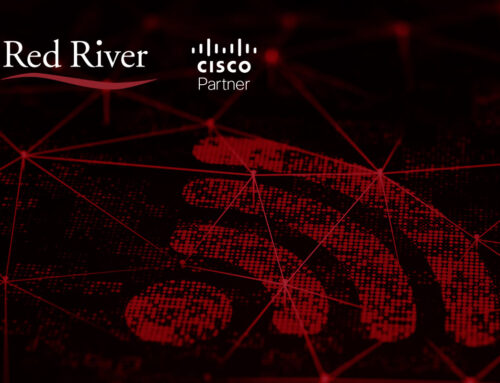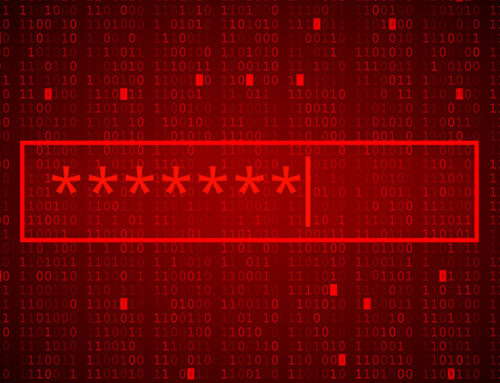
CMMC Gap Analysis vs. CMMC Self-Assessment: What’s the Difference
The Pentagon has been pushing to bring all military stakeholders under one cybersecurity roof, dating back to 2010. That’s when former Pres. Barack Obama signed an Executive Order mandating a standard security policy to protect controlled unclassified information (CUI) across the military industrial base.
With rising concerns that hackers from rogue nations such as Iran, China and Russia threatened national security, one of the goals of the proposed Cybersecurity Maturity Model Certification (CMMC) policy was to end self-assessments. Private-sector organizations continued to suffer data breaches, and the U.S. Department of Defense (DoD) discovered that too many had not met data protection standards until after the damage was done. Three changes in Executive Branch administrations and a re-thinking of CMMC led to CMMC 2.0.
During that period, the wisdom behind the initial CMMC order proved true. In 2020, the infamous Solar Winds hack stung more than 420 Fortune 500 companies and the highest levels of the federal government. The U.S. Treasury Department and Department of Homeland Security were both affected by the Solar Winds cybersecurity incident. The DoD declined to comment on its impact on national security. In 2023, Russian hackers reportedly breached upwards of 632,000 U.S. Department of Justice and Pentagon email addresses. Employees at the DoD, Air Force, Army, Army Corps of Engineers, Office of the Secretary of Defense and Joint Staff were impacted.
The final rule is expected to hit the books in October, making CMMC compliance an urgent matter. Direct military contractors and those in the supply chain will quickly need to demonstrate they meet the cybersecurity benchmark. Some organizations are tasked with conducting a CMMC self-assessment. However, every operation needs or would greatly benefit from a CMMC gap analysis.
What is a CMMC Gap Analysis?
A CMMC gap analysis is designed to provide valuable insights into an organization’s security policies, practices and ability to protect CUI in non-governmental networks. It’s not uncommon for some outfits to use a CMMC checklist based on the NIST SP 800-171 framework to determine their system’s strengths and vulnerabilities. Typically performed by a Certified Third-Party Assessor Organization (C3PAO) with specialized knowledge about the mandate and data security, the process places the following under strict scrutiny.
- User Access Controls
- Cybersecurity Controls
- Risk Management
- Incident Response Policies and Procedures
- Technical Capabilities
- Threat Identification Abilities
- Cybersecurity Awareness Training
- Recovery Policies and Procedures
- Continuous Improvement
In many ways, CMMC 2.0 is not just a policy that requires military contractors and peripheral businesses to check boxes. It takes a holistic approach to cybersecurity that calls for ongoing vigilance and regulatory compliance.
Who Needs a CMMC Gap Analysis?
As the federal government moves closer to requiring proof of CMMC 2.0 compliance to benefit from lucrative contracts, a CMMC gap analysis paves the way for organizations to gain full accreditation without setbacks or hiccups. The process is something of an off-the-books audit that looks at an entire business network. Key elements involve analyzing how CUI and other critical data are being stored, accessed and transmitted.
It’s important to keep in mind that a CMMC gap analysis is not necessarily a DoD requirement. Regardless of whether your operation needs to meet Level I, II or III cyber hygiene, an analysis highlights data protection strengths and weaknesses that need to be resolved. To answer the question, any organization operating in the military industrial base would be well-served to have a CMMC gap analysis performed before scheduling an official C3PAO audit.
Benefits of a Third-Party Gap Analysis
Think of a CMMC gap analysis as a type of roadmap. It shows you where you currently are — in terms of cyber hygiene — and provides critical information about how to get to your final destination, i.e. CMMC compliance. These rank among the common benefits organizations gain from the experience.
- Roadmap to Compliance: Possessing a detailed understanding of your network and staff’s ability to protect CUI allows decision-makers to implement changes. Knowing where to strengthen otherwise weak cybersecurity elements hardens your attack surface.
- Improved Risk Management: The CMMC gap analysis provides critical information to make informed decisions regarding data privacy and protection risks. Although no digital system can always detect, deter and repel extremely well-funded advanced persistent threats, the gap analysis report allows industry leaders to mitigate risk.
- Confidence Through Practice: It’s not unusual for companies to enlist the support of a C3PAO to run several gap analyses to ensure they are ready for an official audit.
At the end of the day, a CMMC gap analysis helps strengthen an organization’s overall security posture. Everything from CUI to intellectual property and credit card numbers is safer and more secure.
What is a CMMC Self-Assessment?
A CMMC self-assessment may be the most confusing and misunderstood aspect of the mandate. The DoD shift to the CMMC 2.0 update re-inserted the ability for organizations to self-assess. Those who must meet Level I cyber hygiene controls can self-assess. Some tasked with Level II cyber hygiene can also self-assess, while others need an official third-party audit. Knowing which option applies to a given company has become difficult and confusing to industry leaders. If you’re bogged down in this or other CMMC-related issues, Red River can help sort things out.
Prior to the effort to unite companies in the military industrial base under a single data security banner, some failed to maintain adequate data security. Too many outfits considered self-assessments a checklist item that did not call for ongoing attention. Cybercriminals would steal CUI and pieces to our national security policies. The contractor or subcontractor would pay a fine or be suspended after our enemies got what they wanted. The difference between this newly minted policy and pre-CMMC regulations is that companies will need to prove their compliance in advance.
Who Needs a CMMC Self-Assessment?
The Pentagon requires Level I and some Level II companies to perform a CMMC self-assessment and report the findings to a federal database. The process considers how CUI is handled, stored and transmitted. Companies that also utilize Federal Contract Information (FCI) must perform a self-assessment as well.
Some of the pitfalls to be wary of include conducting a self-assessment when the data you leverage calls for a third-party audit. That’s because a great deal of confusion persists among Level II organizations. Running a self-assessment without a knowledgeable CMMC-accredited third party leads to misinterpretations about the results. It’s essential to remember that a CMMC self-assessment creates an official record of your operation’s ability to keep CUI and FCI safe and out of the hands of foreign adversaries. Failing a CMMC self-assessment can result in a company getting sidelined until the security deficiencies are cured, and your business posts a passing grade.
Benefits of a Self-Assessment?

Although the DoD allows businesses in the military supply chain to, it may be prudent to work with an impartial CMMC assessment expert. Just like the writer who reads through their typos and grammatical errors, people too close to their network may not see the gaps, vulnerabilities and inadequate practices and protocols. Having a second set of eyes conduct a CMMC assessment delivers the following benefits.
- Mitigate Risks: An unvetted network is highly likely to have cybersecurity inadequacies that threaten the organization. During the CMMC self-assessment process, unpatched applications, firewalls and anti-virus software deficiencies, as well as a lack of cybersecurity awareness training, surface. Resolving these and other weaknesses improves cyber hygiene and lowers the risk of a data breach.
- Regulatory Compliance: The CMMC self-assessment is a compliance requirement for Level I and many Level II enterprises working in the military supply chain. Adhering to the CMMC principles establishes the determined digital security needed to comply with other state, federal and international regulations. These typically include the European Union’s General Data Protection Regulation (GDPR) and America’s Health Insurance Portability and Accountability Act (HIPAA), among others.
- Security Reputation: Integrating the mandate and successfully completing a CMMC self-assessment lets stakeholders and potential clients know you possess robust cybersecurity. That means their sensitive and confidential data is protected by Pentagon standards. On the other hand, failing to protect these and additional digital assets can have a disastrous impact. When others in your orbit suffer compromised data due to a network’s failure, your company’s reputation could be permanently sullied.
A successful CMMC self-assessment delivers a competitive edge in any sector. It demonstrates that hackers cannot waltz in and steal digital assets, which diminishes national security. A completed process also protects the data of customers, clients and industry partners you do business with outside the military industrial base. Not every private-sector operation can boast that it meets DoD security standards.
What’s the Difference Between a CMMC Gap Analysis and Self-Assessment?
People in the managed IT field sometimes toss around the terms “Gap Analysis” and “Gap Assessment” almost interchangeably. In the CMMC niche, the terms have separate and distinct meanings. A gap analysis tends to be an informal or unofficial review of security measures and best practices. Your company won’t get fined, suspended or sidelined from DoD work if the results fall short of the standard.
By contrast, a CMMC self-assessment involves an official review of network security and data protection practices. The results either help deliver regulatory compliance or require you to sit on the sidelines until your organization passes.
How To Become CMMC Compliant
Onboarding a firm with CMMC 2.0 expertise helps determine the appropriate cyber hygiene you need to meet. Business professionals who leave this facet to in-house IT staff members, who are not intimately familiar with CMMC, often miss the mark. Some outfits spend unnecessary time and resources preparing for Level III controls and protocols. Others are unable to delineate the CMMC 2.0 controls, leading their business to fail an official self-assessment. These are common steps used to gain CMMC certification.
- Determine CMMC Level: The challenge has been determining whether Level II companies can self-assess or need to schedule a CMMC audit. Getting it right calls for a thorough understanding of CUI, FCI and applicable regulations.
- Identify Controls: Level I requirements include 17 controls that are equivalent to basic safeguarding measures. Level II operations call for upwards of 110 controls.
- Perform a Gap Analysis: Having a new set of eyes take a deep dive into your security posture can be an eye-opening experience. The information gathered from this process highlights what’s working and what needs improvement.
- Harden Defenses: Prioritize resolving the gaps and vulnerabilities that relate to the CMMC level you need to meet. Consider working with a third-party CMMC expert to make a comprehensive effort to exceed Level I or II requirements and ensure your business remains secure.
After a series of successful gap analyzes, plan to conduct a self-assessment. The thoroughness and outcome of the self-assessment could determine how much revenue you earn going forward.
RED RIVER PERFORMS CMMC GAP ANALYSIS AND ASSESSMENTS
At Red River, we understand that CMMC compliance can prove challenging. We collaborate with companies to provide effective, scalable managed IT and cybersecurity consulting. Contact us today by calling or filling out our online form. Let’s get the process started!

written by
Corrin Jones
Corrin Jones is the Director of Digital Demand Generation. With over ten years of experience, she specializes in creating content and executing campaigns to drive growth and revenue. Connect with Corrin on LinkedIn.




